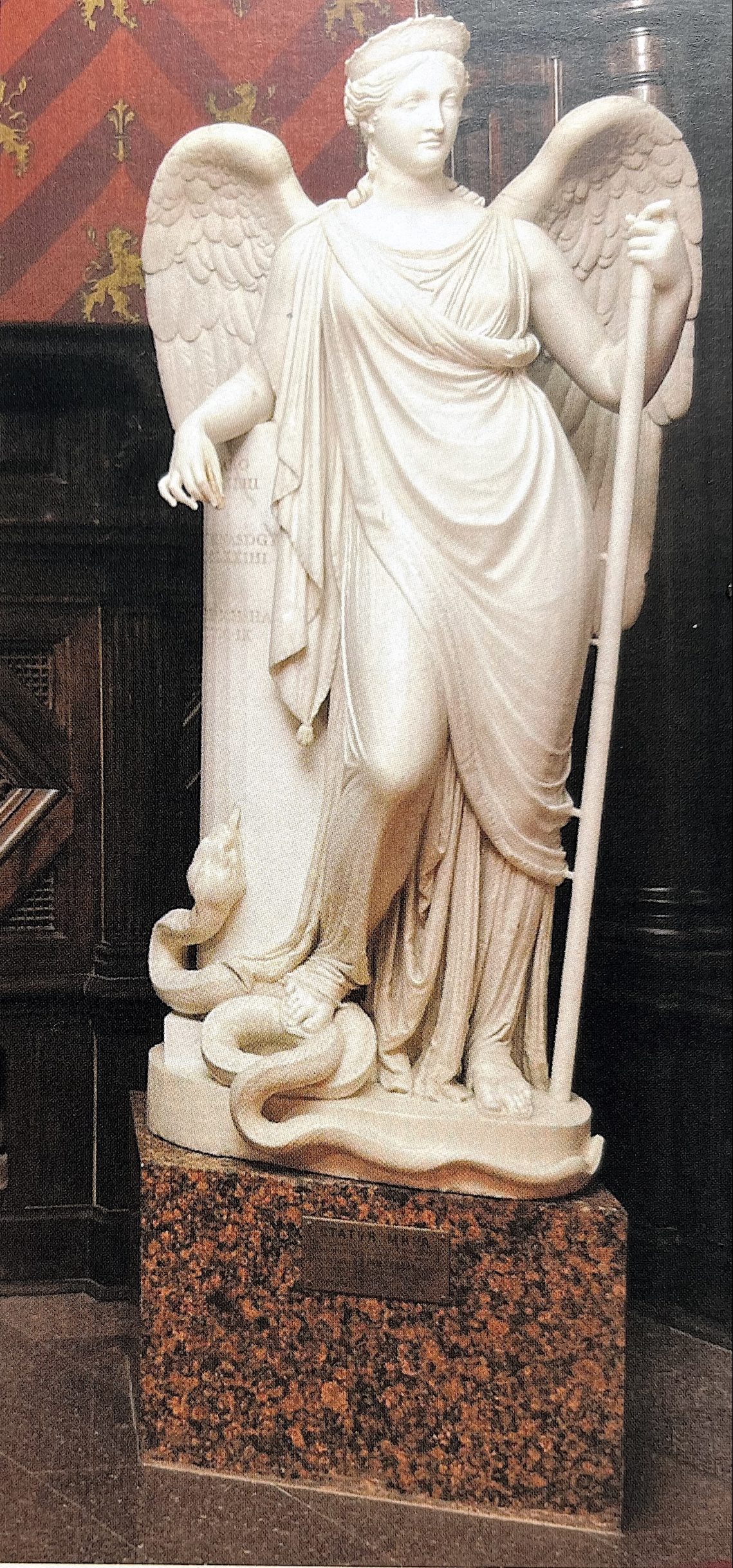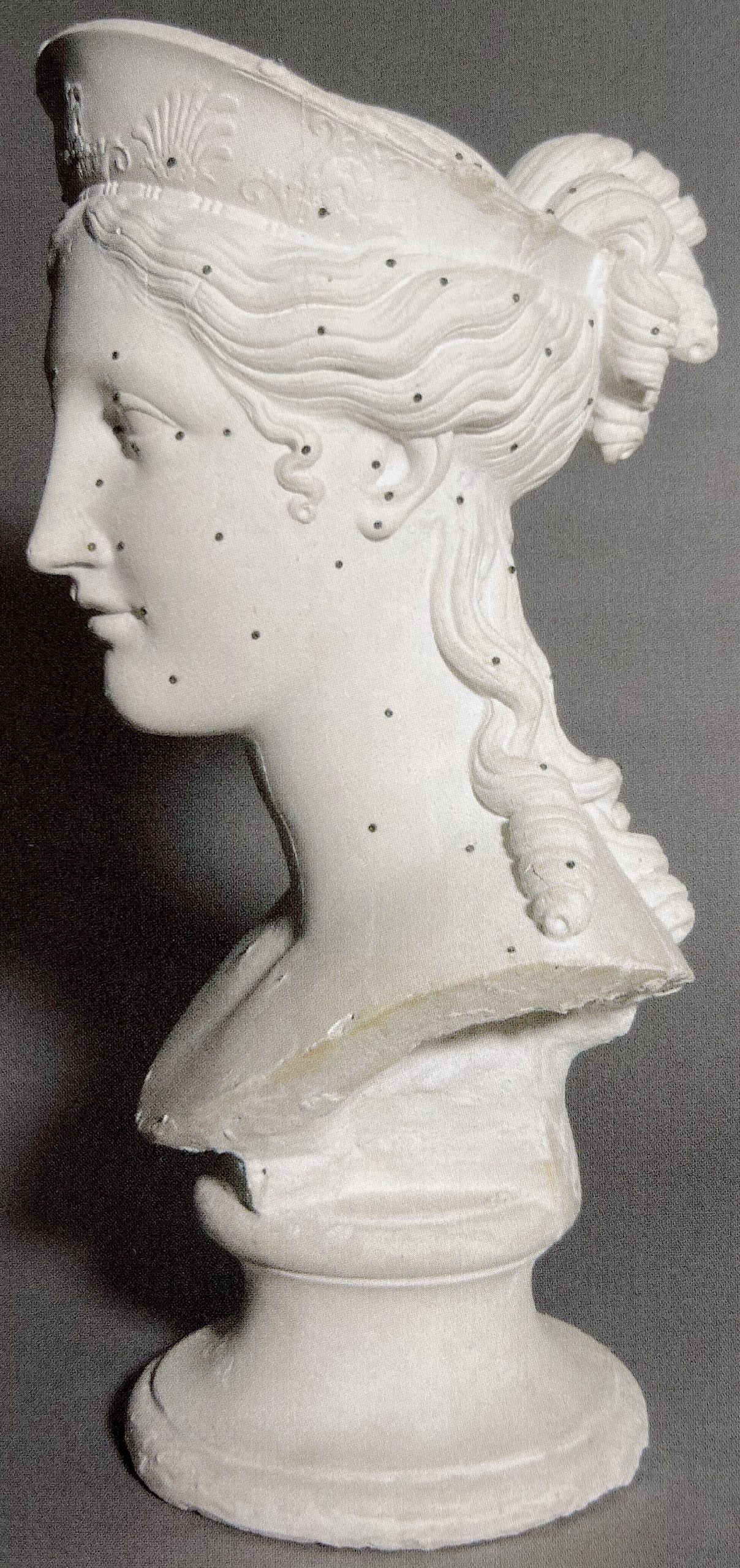In search of Canova’s Marble Bust of Peace
Eugene Edelman
Artistic discoveries don’t happen by accident; and on the way to them you have to study, read, explore, observe, develop taste and philosophy, train in this, like an Olympian before competitions – in general, be ready to discover …
I was born after WWII, in the former Soviet Union, and was raised in Moscow’s Kutuzovskii Prospekt district. Since childhood I was exposed to the historical events of the Russian Great Patriotic War of 1812.
Upon the French entering Moscow they found the city burning from many fires; they looted what they could including art, and soon retreated back.
The invasion of Napoleon forced the Russian army to go all the way to France, reaching Paris on March 31st, 1814, while destroying the French army on the way.
During the occupation of Paris Emperor Alexander I purchased from Napoleon’s former wife Joséphine the sculpture of The Three Graces by Antonio Canova (1757–1822), which was the most famous contemporary artwork to be found in Paris.
The most fascinating of Canova’s works in Russian collections was the Statue of Peace, commissioned in 1811 by Count Nikolai P. Rumyantsev (1754–1826), then Russian Foreign Minister.
The Rumyantsev family had a long and distinguished history as peacemakers. Count Nicolai’s father, the great military commander Pyotr Alexandrovich Rumyantsev-Zadunaisky, had forced the Ottoman Sultan to sue for peace during the first Russo-Turkish War in 1774. His grandfather, Count Alexander Ivanovich Rumyantsev, had concluded the Treaty of Albo in 1743, ending the Russo-Swedish War of 1741–1743.
Count Nicolai Rumyantsev, a Russian patriot, and supporter of the Treaty of Tilsit (1807) that established peace between Russia and France, also made peace proposals to Britain to avoid war….

His commission for a Statue of Peace in 1811 was intended to serve for a memorial to his family’s role as peacemakers in Europe. Due to the French invasion of Russia in 1812, the statue was delivered to St. Petersburg only in 1816, after the final defeat of Napoleon at Waterloo in 1815.
One hundred years later, the Statue of Peace, like many other works of art in Russian collections, came under different ownership: following the 1917 Revolution, the new Soviet government nationalised many works of art belonging to private collections; and sold some to the West to raise money.
The most remarkable decision made by Stalin was to distribute works of art from Russian collections between the sixteen republics, which were incorporated in the USSR, and he believed never would be independent from him. The Statue of Peace was given to Ukraine.
Canova’s original catalogue of works compiled as early as 1823 also includes a Bust of Peace (derived from the Statue of Peace). It is stated to have been given by the artist to Lord Cawdor (John Campbell (Lord Cawdor) was Canova’s earliest British patron) in 1814, therefore preceding the completion of Rumyantsev’s full statue in 1815. Further research revealed that this Bust of Peace was last seen in the London Royal Academy of Arts’ Exhibition of 1817.
Lord Cawdor travelled to Rome, late in 1814, to visit Canova. The artist had been developing the concept of Ideal Heads (“Teste Ideal”) with a specific purpose of gifting them. The Bust of Peace being just completed, Lord Cawdor received it as a present symbolising the end of the Napoleonic Wars.
In Paris, Lord Cawdor again met Canova who had been appointed by Pope Pius VII to seek retribution for the works of art looted by Napoleon’s Armies from the Vatican and Rome.
All in all, Canova’s Bust of Peace embodies the epoch… of “war and peace”.
Four more Ideal Heads of different subjects were received by British dignitaries amongst which the Head of a Dancer received by the Duke of Wellington – deriving from the full statue “Danzatrice” acquired by Emperor Alexander I (now in Hermitage Museum, St. Petersburg).
… Two hundred years later however, the missing Bust of Peace was left unidentified when it appeared at auction in London in a garden statuary sale!
Being ready with prior knowledge, there was no other matter but to secure it; purchase and “discover” it! Painstaking restoration revealed without any doubt it was an original missing work by Canova: The Bust of Peace …
Establishing the provenance and authentication began by me and my partner Princess Anne de La Tour d’Auvergne, with finding out whether the Cawdor’s Estate (Castle Cawdor) had any documentation to finalise this remarkable discovery… We were advised this task will be very difficult as no access to the Cawdor Archives had been granted to scholars before, nor publications enabled… However, we decided to write directly to Lady Cawdor, proprietor of the Estate; and to our great delight the answer arrived where Lady Cawdor asked Anne if she was the daughter of Prince Henry de La Tour d’Auvergne whom she knew years ago in Paris… Once assured Anne was indeed his daughter Lady Cawdor instructed the Keeper of the Cawdor historical documentation to help with anything we needed, including examining original letters etc.., for the purpose of publication if needed. What a discovery that was!
The research into Lord Cawdor was more than satisfactory. It revealed for the first time the patron and Canova’s long-standing friendship from 1787, through their personal correspondence, and related to the Bust of Peace — while the chronology of this object of art was unequivocally settled. We discovered that the two-hundred-year-old-missing masterpiece had been sent to England on July 1816 aboard the ship Abundancia (which also returned to Rome the monuments recovered from France) to be exhibited on Canova’s request by Cawdor at the Royal Academy in 1817 – whence by August 1819 it would be dispatched to Lord Cawdor’s home of Stackpole in Wales.
Lord Cawdor passed away on June 1st, 1821; Canova on October 13, 1822.

Meantime, we were informed by Canova’s museum (the Gypsoteca) they did not own the plaster model “with black dots” (which permitted the precise transfer by Canova to the medium of marble) for the Bust of Peace. The Gypsoteca stated that three plasters had existed originally: One was destroyed during a 1917 bombing, another was not traceable, and one had been donated to the Museum of Bassano del Grappa in the middle of the 19th Century… but was missing from their inventory.
As we lost hope, a message came from Professor Mario Guderzo (director of the Gypsoteca) that while working in the Bassano Museum he did come across “a plaster bust with black dots” in their storage facilities! He had arranged for photos to be taken at the time. It turned out to be the original plaster for Bust of Peace, and this became another discovery…!
Lord Cawdor’s Stackpole House’s inventory did not include the Bust of Peace marble either. That is until, during archival research, we found a catalogue from Strutt&Parker/Loft&Warners’ Auctioneers mentioning a “Lady wearing a Diadem…21 inches high” under lot 556 of the Statuary section, for the public auction of the contents of Lord Cawdor’s beautiful one hundred and fifty rooms’ mansion of “Stackpole Court in Pembrokeshire”, which unfolded in situ from November 19th to the 21st 1962 before the mansion was destroyed…
We realised this unidentified marble bust “of a Lady” was in fact the Bust of Peace last seen in the 1817 Royal Academy exhibition in London! This concluded our research.
But we would never know why the Bust of Peace was hidden from view until 1962 and could again end up as garden statuary… were it not for our discovery.
The bust was purchased and remains in a private collection.




